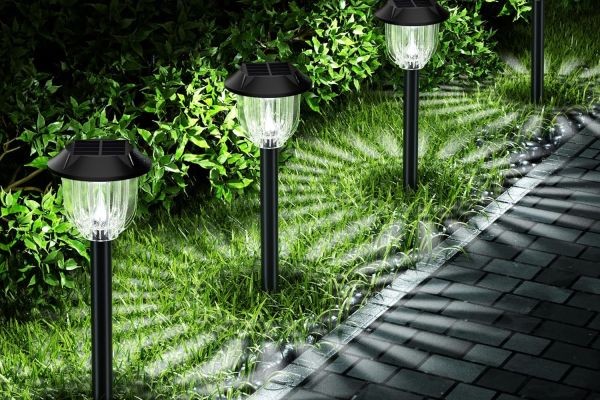The outdoor lighting market is experiencing significant growth, driven by advancements in LED technology, the adoption of solar-powered solutions, and the integration of motion-activated systems. These innovations are transforming outdoor spaces, enhancing energy efficiency, and contributing to sustainability efforts worldwide.
LED Outdoor Lighting: Efficiency and Longevity
Light Emitting Diode (LED) technology has revolutionized outdoor lighting by offering energy-efficient and long-lasting solutions. LEDs consume less power and have a longer lifespan compared to traditional lighting options, making them a cost-effective choice for both residential and commercial applications.
Key Advantages:
-
Energy Efficiency: LEDs use a fraction of the energy consumed by incandescent bulbs, leading to significant cost savings on electricity bills.
-
Durability: With a lifespan of up to 50,000 hours, LEDs require less frequent replacements, reducing maintenance costs.
-
Instant Illumination: LEDs provide immediate full-brightness output without the warm-up time associated with other lighting technologies.
-
Design Flexibility: Available in various colors and sizes, LEDs can be customized to suit diverse outdoor aesthetics.
Applications:
-
Pathway and Garden Lighting: LEDs illuminate walkways and garden features, enhancing safety and ambiance.
-
Security Lighting: Bright, focused LED lights deter intruders and improve visibility around properties.
-
Architectural Lighting: LEDs highlight building facades and landscaping elements, adding visual appeal.
Solar-Powered Outdoor Lighting: Sustainability at Its Best
Solar-powered outdoor lighting systems harness the sun's energy, providing an eco-friendly alternative to traditional grid-powered lights. These systems are particularly beneficial in areas with limited access to electricity and contribute to reducing carbon footprints.
Key Advantages:
-
Renewable Energy Source: Solar lights operate using sunlight, reducing reliance on fossil fuels and lowering greenhouse gas emissions.
-
Low Operating Costs: Once installed, solar lights incur minimal operational costs, as they do not require electricity from the grid.
-
Easy Installation: Solar lights are typically wireless and require little to no maintenance, making them ideal for remote or off-grid locations.
-
Automatic Operation: Many solar lights feature dusk-to-dawn sensors, automatically turning on at night and off during the day.
Applications:
-
Street and Pathway Lighting: Solar-powered lights illuminate streets and walkways, enhancing public safety in urban and rural areas.
-
Landscape Lighting: Solar garden lights add aesthetic value to outdoor spaces without increasing electricity consumption.
-
Security Lighting: Solar motion sensor lights provide illumination in areas where traditional lighting may not be feasible.
Motion-Activated Outdoor Lighting: Security and Convenience
Motion-activated outdoor lighting systems enhance security and energy efficiency by illuminating areas only when movement is detected. These systems are ideal for driveways, entryways, and dark corners of properties.
Key Advantages:
-
Energy Savings: Lights remain off until motion is detected, conserving energy and reducing electricity costs.
-
Enhanced Security: Immediate illumination deters potential intruders and provides better visibility for occupants.
-
Convenience: Motion-activated lights automatically turn on when needed, eliminating the need to manually operate switches.
-
Extended Lifespan: Reduced operating hours extend the lifespan of lighting fixtures.
Applications:
-
Driveways and Entrances: Motion sensor lights illuminate driveways and entryways, providing safe access to properties at night.
-
Backyards and Patios: These lights enhance outdoor living spaces by providing illumination only when in use.
-
Security Perimeters: Motion-activated lights around property boundaries increase security by alerting homeowners to movement.
Market Trends and Future Outlook
The outdoor lighting market is witnessing several trends that are shaping its future:
-
Smart Lighting Integration: The incorporation of smart technologies allows for remote control and automation of outdoor lighting systems, offering convenience and energy management.
-
Sustainability Initiatives: Growing environmental awareness is driving the adoption of energy-efficient and eco-friendly lighting solutions, such as solar-powered and LED systems.
-
Urbanization and Infrastructure Development: Expanding urban areas and infrastructure projects are increasing the demand for outdoor lighting solutions to enhance public safety and aesthetics.
-
Government Regulations and Incentives: Policies promoting energy efficiency and renewable energy adoption are encouraging the use of advanced outdoor lighting technologies.
Conclusion
The evolution of outdoor lighting technologies, including LED, solar-powered, and motion-activated systems, is transforming outdoor spaces by enhancing energy efficiency, sustainability, and security. As these technologies continue to advance, the outdoor lighting market is expected to grow, offering innovative solutions for diverse applications.

